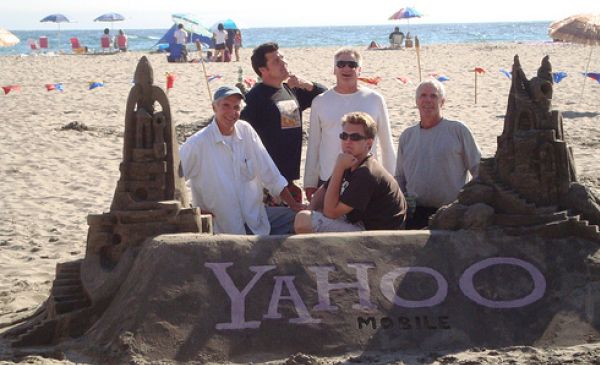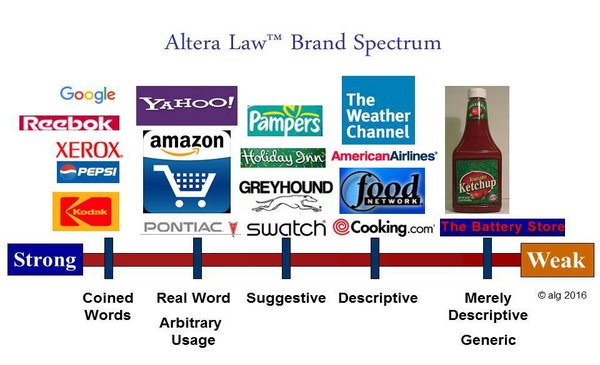
Sand castle construction and brand building have a lot in common. If the foundation isn’t solid, it doesn’t matter how strong the structure is. It’s going to fail.
The single most important element of brand building is most often (erroneously) assumed to be in order: Whether you actually own your brand?
Without legal ownership, brand equity is zero and will remain zero forever.
At the core of every brand is a legal right called a trademark. Trademark law is a complex body of laws to sort out who owns what with respect to brands. It is possible to boil down trademark law into two simple rules. If you follow those you will have the foundation you need for a viable trademark:
- If the brand is not capable of being owned, then it can never become valuable.
- If the brand is capable of being owned, but you aren’t the owner, then you are brand building for someone else’s benefit.
On the surface, these are pretty easy concepts, but experience shows that most companies fail at one or both.
Rule 1: Own Your Brand

Brand ownership is very counter-intuitive. Strong brands are completely abstract. They tell you nothing about the product/service to which they pertain. The more the brand tends to describe the product or even a feature of the product, the weaker they are. If they are weak they can be copied, until they become so diluted by other brand imitators, that they are eventually worthless. Many branding experts believe one can block the competition by “owning a descriptive brand”. Nothing in branding could be more misguided. Think about it. Can one own the word Soap for soap products and thereby block others from using the name? No, but that hasn’t stopped uninformed companies from trying. In the sandcastle comparison, it amounts to sand on sand.
The brand spectrum (above) shows the world’s most valuable and ownable brands on the left/strong side, and weaker or non-brands on the right side. It is no accident that the most valuable brands are stronger. Weak brands, or the worst of all, descriptive and generic terms, are words not capable of being brands, so they can be legally used by anyone. Notice that The Weather Channel® is a weaker brand. Although not generic, the brand is difficult (and expensive) to defend against competitors. Weather Nation™ is vying for the same space on cable and satellite networks, but The Weather Channel brand is unable to prevent such similar usage. This is the ultimate problem. A weak brand becomes diluted by the crowding of similar brands, until the public can’t remember one from the next. Strong brands can be defended against dilution. This weak brand strategy is a classic mistake which violates Rule 1. I am sure that it seemed like a really great idea at the time to use a descriptive name and own the category, but it is and always will be a legally impossible strategy. Google, on the other hand is an entirely made up word, so its strength is supreme. What would have happened if Google had made the wrong choice and called their company SEARCHCO?
Violating the second rule of trademark law is just a bad as violating the first.
Rule 2: Verify That You Actually Own Your Brand
Companies routinely assume they own their brand because they have registered it with the Secretary of State and/or they own their web domain. Again, nothing could be more legally false. Even owning a Federal trademark registration is not absolute proof of clear title.
For example, even if you are the owner of the domain, the true trademark owner, with superior title can take your domain from you. Here’s how Amazon.com almost lost its name.
In an informal survey of privately held businesses, I found that about 65% of them did not have clear legal title to their company or brand names. Many of them had no hope of ever getting clear title. Virtually none of them knew of their predicament.
Why does it matter whether you own your brand name or not?
First, if you aren’t the true brand owner, i.e., you don’t have clear legal title to your trademark, your trademark (brand) and domain can be taken away at any time by a claimant with better title. If you have spent years building brand equity, in a brand you don’t own, imagine how devastating that could be. If your company is one of the 65%, or you don’t know whether you are in that group, you will find out when you when you try to sell your business or bring in investment money. I am regularly authorized to conduct due diligence on companies for sale. More than half the time, my buyers are able to buy such companies at steep discounts, because the brand ownership is not solid. The seller receives much less money for the business than they would have made with clear brand ownership.
The bottom line is that if you want to build a valuable company or product/service brand, it has to be your first priority to make sure you can and do own the brand. The traditional model of engaging trademark counsel at the end of your brand creation process is way too late. A great trademark/brand lawyer will know both branding and trademark law and can provide immeasurable value in avoiding an ownership disaster. The time for intervention by a trademark/branding lawyer, is before you even start the brand ideation process. At the very least, bring the brand spectrum chart to your ideation session and plug your brand ideas into the chart. If they don’t fall on the ownable/left side of the scale, toss and regenerate.
Contributed to Branding Strategy Insider by: Michael Lasky, an intellectual property attorney at Altera Law Group and Schwegman Lundberg law firm. He is the author of the new book The Good Brand – How companies create valuable brands.
The Blake Project Can Help: The Brand Licensing Audit
Branding Strategy Insider is a service of The Blake Project: A strategic brand consultancy specializing in Brand Research, Brand Strategy, Brand Licensing and Brand Education
FREE Publications And Resources For Marketers











